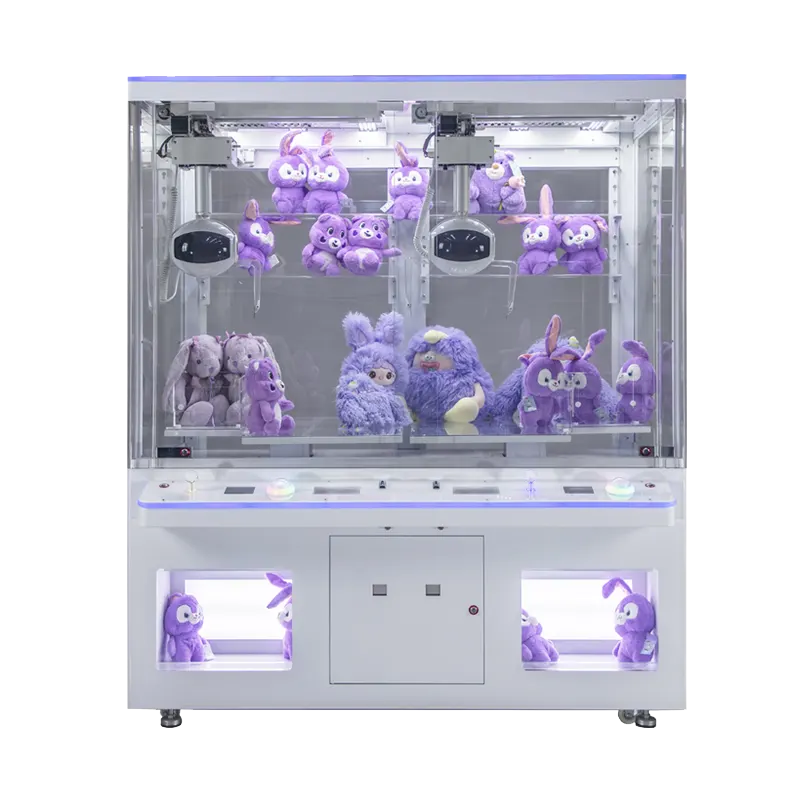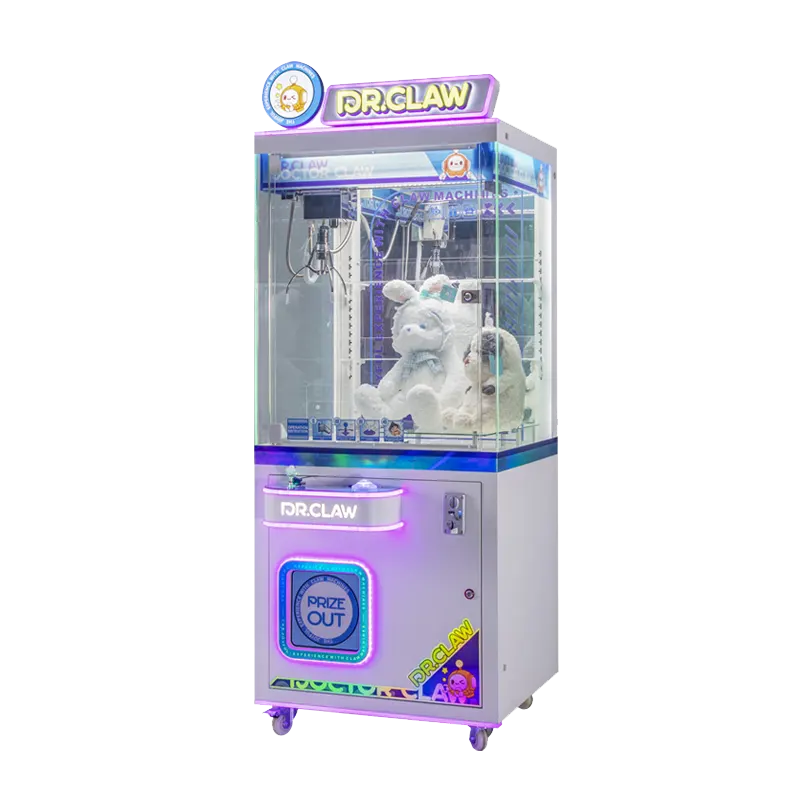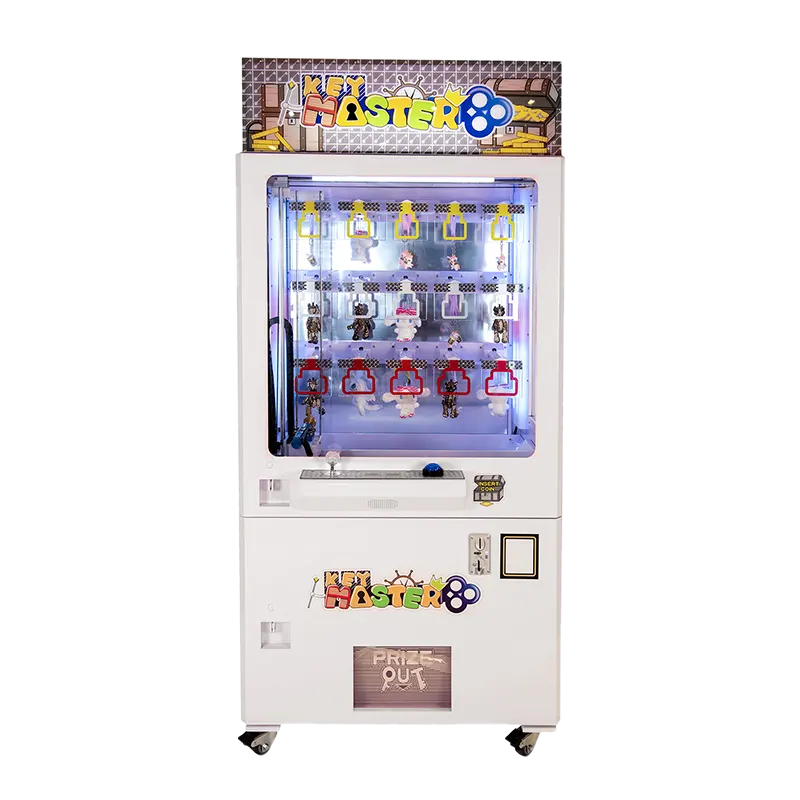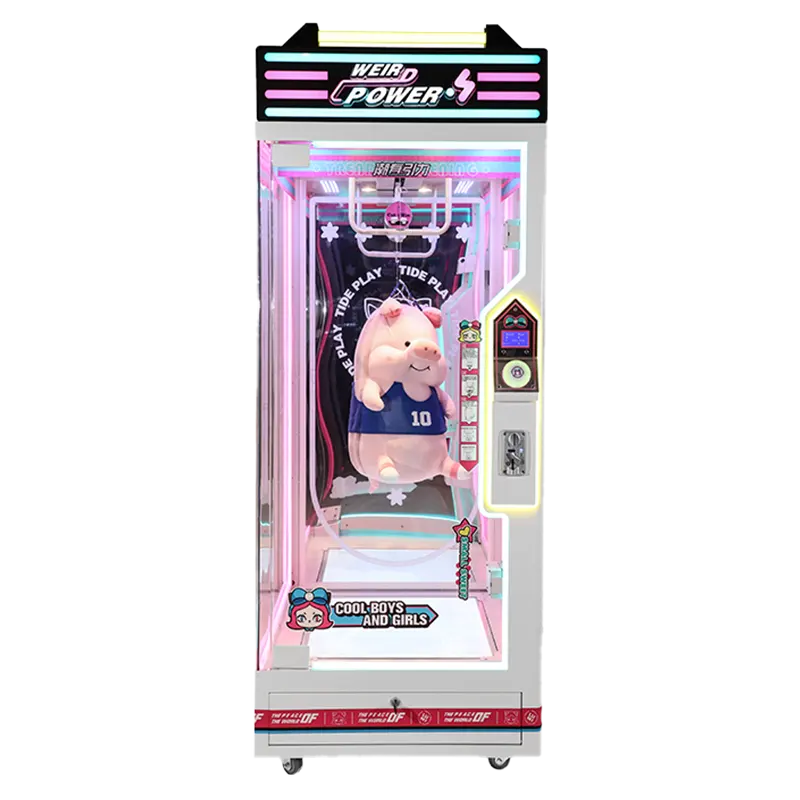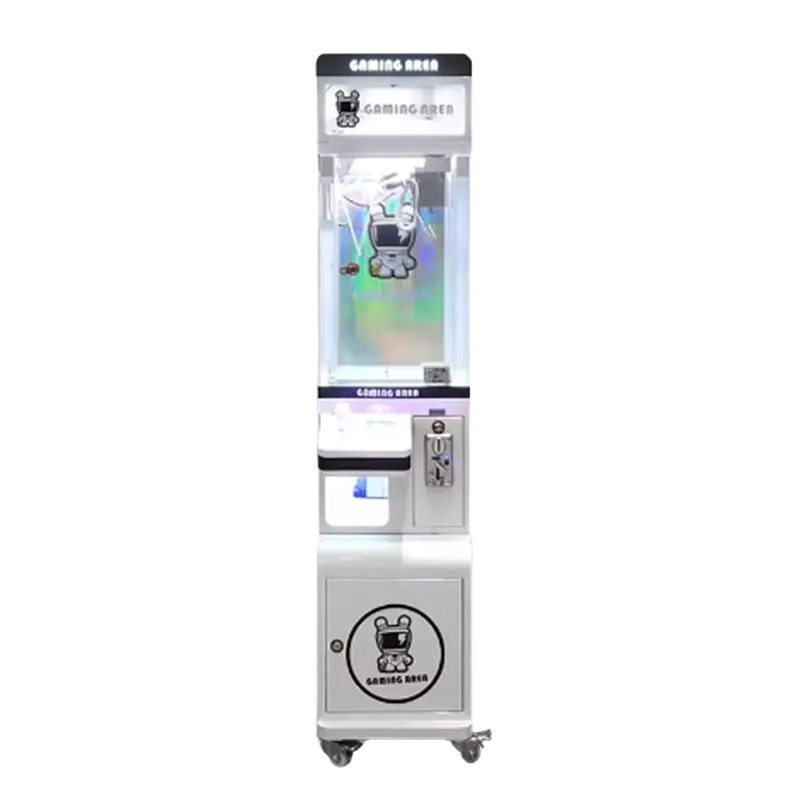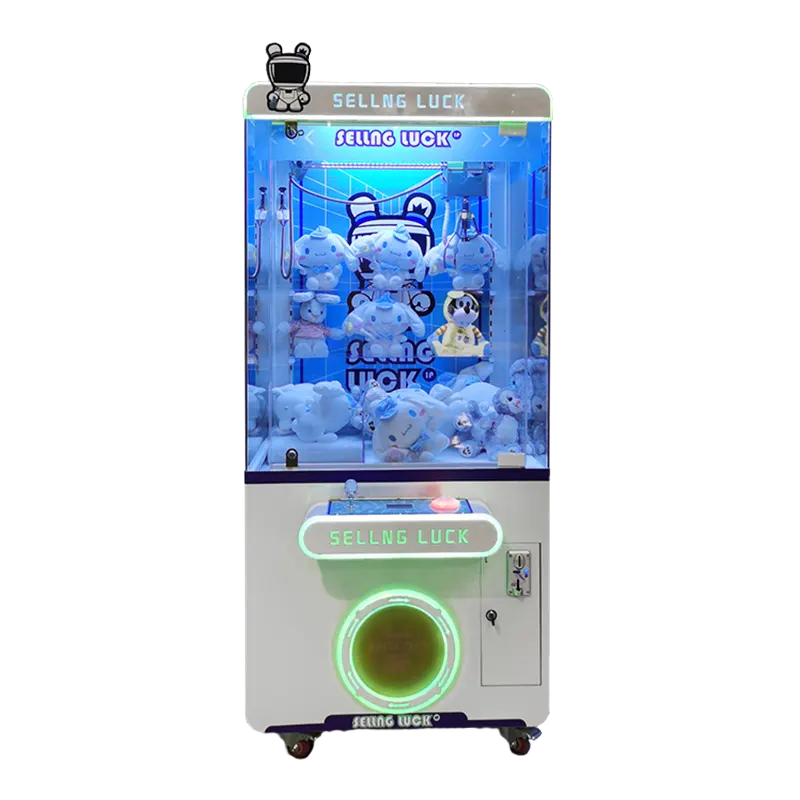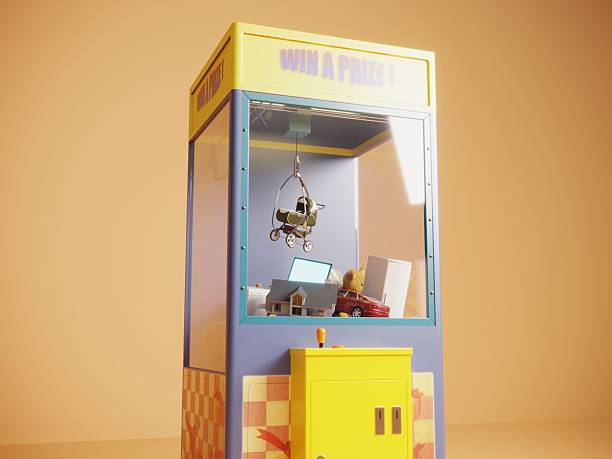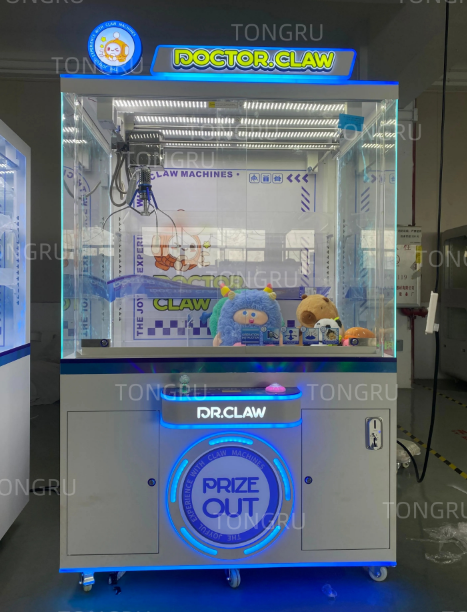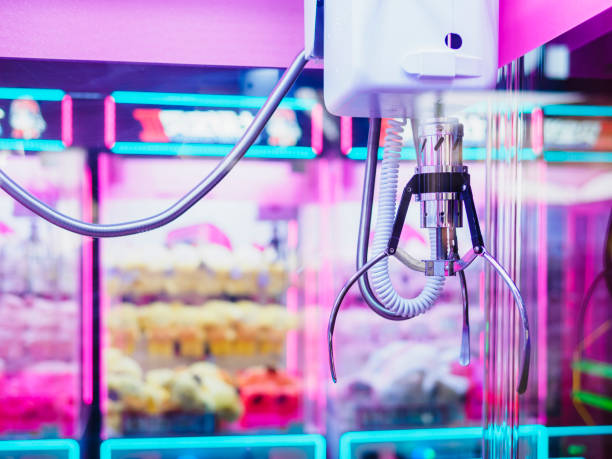Máquinas de garras: esos adictivos, Juegos de aceleración de premios: ha sido un elemento básico de las arcadas y los centros comerciales durante décadas. Pero, ¿cuánto ganan las máquinas de garras detrás de todas las luces intermitentes y los tentadores juguetes de peluche?? Si estás pensando en iniciar un negocio de máquinas de garra o simplemente curiosidad por su potencial de ingresos, no estas solo. Estas máquinas pueden ser sorprendentemente rentables, Pero mucho depende de factores como la ubicación, premios, fijación de precios, y mantenimiento. Vamos a sumergirnos en los detalles de lo que afecta cuánto dinero ganan las máquinas de garras y si invertir en uno es una empresa que vale la pena.
Factores que afectan la ganancia de la máquina de garras
1. Ubicación de las tiendas de máquinas de garras
Ubicación—Es la regla de oro para cualquier negocio, y no es diferente para las máquinas de garras. Máquinas en manchas de alto tráfico, como centros comerciales o parques de diversiones, generalmente atrae a más jugadores y recaudan ganancias más altas. En contraste, una máquina escondida en un rincón tranquilo o una zona de bajo tráfico Lucharé para hacer mucho. Los lugares populares incluyen arcadas, tiendas de comestibles, callejones de bolos, y aeropuertos. Estos son lugares donde las personas tienden a pasar el rato y es más probable que ahorre unos dólares para divertirse, juego rápido.
2. Tipo de máquinas de garras
No todas las máquinas de garras son iguales. El tipo de máquina que elija puede influir significativamente en las ganancias. Máquinas de alta tecnología con características atractivas (como los que hacen sonidos o tienen luces intermitentes) tienden a atraer a más jugadores, Especialmente niños. Por otro lado, Las máquinas más simples con menos estilo pueden ser menos costosas de mantener, pero también pueden ganar menos en general. Los siguientes son Tipos comunes de máquinas de garras en el mercado:
3. Tipo de premios de máquina de garras
Los premios que ofrecen en sus máquinas de garras pueden obtener o romper sus ganancias.
- Premios de bajo costo, como un peluche barato juguetes o dulces, son más fáciles de almacenar y probablemente atraerán a una multitud más grande, Pero es posible que no generen muchas ganancias por juego.
- Premios de alto valor, como electrónica o mercancía de marca, costará más adquirir pero puede justificar precios más altos por juego.
Curiosamente, Cuando ofreces una variedad de premios—Pecialmente en el “punto” rango, donde los clientes sienten que tienen la oportunidad de ganar algo valioso: el compromiso y las ganancias pueden aumentar. Considerar comprar premios de máquina de garras a granel Para ahorrar costos mientras ofrece opciones atractivas.
4. Estructura de precios
El precio por juego puede variar ampliamente, Pero generalmente está en algún lugar entre $1.50 y $3.00 por juego. Típicamente, El costo está determinado por el valor de los premios internos y el precio común para la ubicación. Pero aquí es donde las matemáticas se ponen interesantes: Si tienes un precio demasiado alto, La gente podría rehuir; demasiado bajo, y no cubrirás tus costos. La tasa de victorias también juega un papel: las máquinas configuradas para tener una tasa de victorias más alta (donde los jugadores tienen más probabilidades de obtener un premio) puede justificar un precio más alto. Ofreciendo descuentos o promociones especiales, Como "Juega dos por el precio de uno,"Puede aumentar el tráfico y las ganancias, Especialmente durante las temporadas pico.
Costos de máquinas de garras operativas

1. Costos iniciales de inversión y configuración
Entonces, cuanto cuesta Iniciar un negocio de máquinas de garra? La respuesta depende de ¿Cuánto cuestan las máquinas de garras?. De término medio, una nueva máquina de garras costará entre $150 y $5,000. Si eres Comprar una máquina de garras usada, Es posible que encuentre uno para un poco más barato, alrededor $1,00 a $2,500.
| Tipos de máquina de garras(Nuevo) | Precio medio |
| Mini máquina de garras | $260 - $1,270 |
| Máquina de garras de tamaño mediano | $280 - $1,800 |
| Máquina de garra grande | $560 - $5,600 |
| Máquina de garra gigante o humana | $1,000 - $84,000 |
| Mini máquina de gashapon | $140 - $570 |
Más allá de la máquina en sí, Deberá tener en cuenta los costos de configuración como el transporte, instalación, y potencialmente renovando la máquina. Se suma rápidamente, tan cuidadoso presupuesto es crucial.
2. Costos operativos continuos
Poseer y operar máquinas de garras no se trata de cobrar las monedas. Hay varios costos continuos que deberá considerar:
- Alquilar: Dependiendo de la ubicación, El alquiler de su máquina podría variar desde $1,000 a $10,000 por mes. Las áreas de alto tráfico probablemente vengan con un precio más pronunciado, pero ofrecen una mejor oportunidad para las ganancias.
- Utilidades: Las facturas de electricidad variarán, Pero puede esperar pagar en cualquier lugar desde $200 a $1,000 por mes para alimentar las máquinas y las luces circundantes.
- Mantenimiento: Las máquinas necesitan un mantenimiento regular para mantenerlos funcionando sin problemas. Esto puede costar entre $0 a $100 por mes por máquina.
- Dotación de personal: Si contrata personal para administrar las máquinas, estás mirando los salarios entre $2,000 y $4,000 por mes, dependiendo del número de empleados.
Ganancias promedio de máquinas de garras
Ahora para la parte jugosa, ¿cuánto dinero ganan las máquinas de garras en promedio??
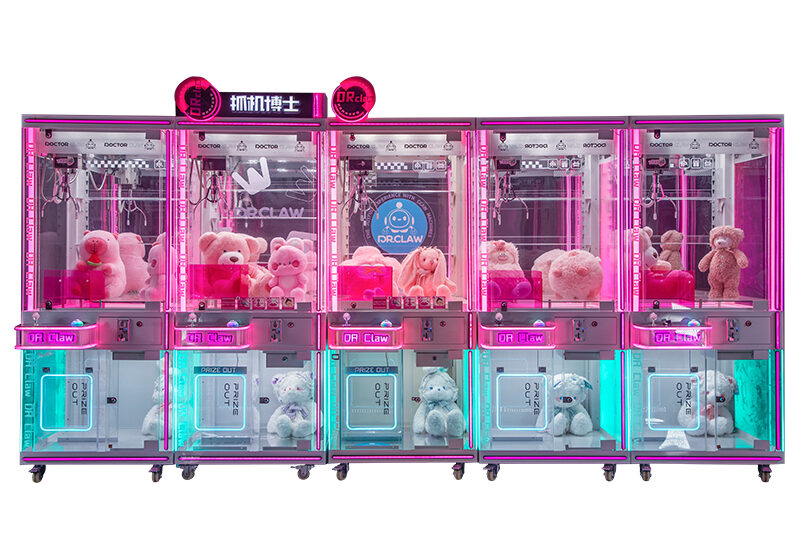
1. Ganancias típicas por mes
De término medio, una máquina de garras bien colocada puede traer entre $200 y $500 por semana. Si tienes 10 máquinas en una ubicación de tráfico medio, cada uno ganando $10 por día, Podrías potencialmente hacer $3,000 por mes. Coloque sus máquinas en ubicaciones principales, Y ese número podría subir a $6,000 un mes. Los lugares más grandes y más concurridos como arcadas o parques temáticos podrían ver los ingresos disparados, con algunas máquinas generando sobre $1,000 por semana.
2. ¿Cuánto gana una sola máquina de garras en un día??
Las ganancias diarias de una sola máquina varían según su ubicación, el tipo de premios, y que ocupado está el lugar. De término medio, Una buena máquina en una ubicación de tráfico medio puede hacer en cualquier lugar desde $10 a $50 un día. En una zona bulliciosa, Como un centro comercial ocupado o una atracción turística, Podría ser aún más alto. Pero recuerda, Incluso en una ubicación primaria, Factores como la época del año o los eventos especiales pueden influir en la cantidad de dinero que hace una máquina de garra cada día.
3. Estacionalidad y eventos especiales
Al igual que la mayoría de las empresas, Las máquinas de garras tienen sus temporadas ocupadas y lentas. Los períodos de vacaciones y los meses de verano generalmente ven más tráfico peatonal, lo que significa más jugadores y mayores ganancias. Eventos especiales, Como festivales o grandes aperturas, También puede darle a su máquina un gran impulso. Por ejemplo, Si estás en un centro comercial durante una juerga de compras navideñas, Puede esperar que sus máquinas ganen mucho más de lo que lo harían durante una semana típica..
Calculadora sin ROI de máquina de garras
🧮 Calculadora de ROI de máquina de garras
Desea ayuda para obtener una máquina de garras confiable al mejor precio? Póngase en contacto con nuestro equipo - Estamos felices de ayudar!
Análisis de mercado
Mercado de Japón
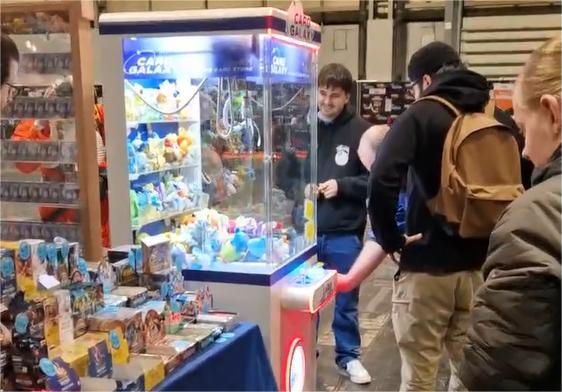
Descripción general:
Japón es uno de los mercados más populares para máquinas de garras. A pesar de una disminución general en el negocio de arcade, Las máquinas de garras siguen siendo favoritas de los fanáticos. De término medio, una sola máquina puede entrar 1.5 millones de yenes al año, Aunque esto varía dependiendo de la ubicación, configuración de la tienda, y estrategia. Deberá cavar en el desglose de costos para obtener la imagen completa.
Desglose de costos:
Equipo & Costos de mantenimiento
- Una máquina de garras generalmente cuesta entre 100,000 y 300,000 yen, dependiendo de la marca y las características. Los de segunda mano son más baratos.
- El mantenimiento y las reparaciones también se suman: Alrededor de 3,000–5,000 yenes por máquina por mes. Que cubre la reparación de problemas mecánicos, electricidad (3–5 kWh por día), y actualizaciones de software.
Alquilar
- Si su tienda está en una zona ocupada como el Minato Mirai de Yokohama, El alquiler se vuelve caro y toma una gran parte de sus costos. En lugares suburbanos más tranquilos, Es mucho más ligero en la billetera.
- Ubicación principal (Minato Mirai, P.EJ., World Porters Mall con Bandai Namco Cross Store): 80,000–120,000 yenes por tsubo (acerca de 3.3 m²) por mes, Comer hasta un 20% –25% de los ingresos.
- Ubicación secundaria (Área turística de Chinatown o Isezakicho): 50,000–80,000 yenes por tsubo por mes, Mejor para tiendas más pequeñas.
Mano de obra & Gestión operativa
- Necesitará personal para administrar la tienda, reabastecer los premios, y ayudar a los clientes. El trabajo en Japón no es barato, Entonces afectará tus ganancias.
- Dotación de personal: Una tienda con 30 Las máquinas necesitan 2–3 empleados. A 1.200–1,500 yenes por hora, Eso es 720,000–1,35 millones de yenes al mes.
- Operaciones: Gestión de inventario, planificación de eventos, y el ajuste de la máquina ocupa del 10% al 15% de los costos totales.
Costos de premio
- Los premios suelen ser juguetes IP calientes, peluches, o gadgets. Los premios de alto costo encogen tus márgenes, Pero los populares pueden dibujar más jugadores y aumentar la rotación.
- Peluches regulares: 500–1,500 yenes cada uno (juguetes sin licencia), con un margen de beneficio del 40% al 60%.
- Premios IP (P.EJ., Demon Slayer o Jujutsu Kaisen Merch): 3,000–8,000 yenes cada uno, 30%–50% margen, más 10% –15% de tarifas de licencia de IP.
- Premios de alta gama (P.EJ., Nintendo Switch o Electrónica de colaboración): 30,000–50,000 yenes cada uno, Solía hacer que la tienda sea más atractiva, con un margen de 20% –30%.
Marketing & Eventos
- Anuncios en línea: Los anuncios de Facebook e Instagram funcionan de 50,000–100,000 yenes al mes.
- Eventos fuera de línea: Colaboraciones temáticas (como pantallas de modelo Gundam) o las interacciones de cosplay cuestan entre 100,000 y 300,000 yenes por evento, pero pueden aumentar el tráfico peatonal en un 30%–50%.
Otros costos: No olvides la electricidad, seguro, impuestos, y otros gastos operativos, todos se suman.
Desglose de ganancias:
Digamos que hace una sola máquina 1.5 millones de yenes al año. Después de los costos, La ganancia neta está cerca 30%, o 450,000 yen. Para una tienda con 20 máquinas, eso es 30 millones de yenes en ingresos anuales. Después del alquiler, mano de obra, y premios, estás mirando 5–10 millones de yenes en ganancias anuales.
Retorno de la inversión (ROI):
Costos iniciales (máquinas, depósito de alquiler, decoración, etc.) puede encontrarse con millones de yenes. Si su beneficio anual es 5 millones de yenes, Llegarás en 1 a 2 años, dependiendo de los detalles.
Modelo de ganancia & Caso de estudio:
- Fórmula de ingresos básicos:
- Por juego: Las máquinas regulares cobran 100–200 yenes por juego; Hot Machines Charge 300–500 Yen.
- Tasa de éxito: 8%–15% en promedio.
- Ingresos mensuales por máquina: Las máquinas regulares hacen de 100,000–150,000 yenes (50–80 juega al día); Las máquinas IP hacen 200,000–300,000 yenes.
Caso de estudio: Minato Mirai Shop con 20 Máquinas
| Artículo | Cantidad (Mensual) | Proporción |
|---|---|---|
| Costo del premio | ¥ 900,000 (30%) | 30% |
| Alquilar | ¥ 600,000 (20%) | 20% |
| Costo de mano de obra | ¥ 900,000 (30%) | 30% |
| Mantenimiento & Marketing | ¥ 300,000 (10%) | 10% |
| Beneficio neto | ¥ 300,000 (10%) | 10% |
Notas:
- Teniendo 40% Las máquinas IP calientes pueden aumentar el precio promedio de su boleto, Pero aumenta los costos del premio.
- Los fines de semana y las vacaciones pueden doble ingresos, empujar los márgenes de ganancia al 15%-20%.
- Un sistema de fidelización (P.EJ., gastar 1,000 yen, conseguir 1 moneda gratis) puede aumentar las visitas repetidas por 20%.
Resumen:
Las máquinas de garras en Japón siguen siendo un sólido fabricante de dinero. Con buena gestión y una excelente ubicación, Las mejores tiendas pueden nacer de 3 a 5 millones de yenes al año. Pero el éxito depende de la ubicación, Estrategia de IP, y control de costos. Si estás empezando, Prueba 20-30 máquinas, Centrarse en los nicho de los mercados (como IPS orientados a mujeres o artículos de edición limitada), y use datos para seguir ajustando su enfoque.
A NOSOTROS. Mercado

Estructura de costos y análisis de rentabilidad: costos clave
| Artículo | Rango de costos (Dólar estadounidense) | Descripción |
|---|---|---|
| Equipo | $600 - $3,000 por unidad (nuevo) | La máquina estándar cuesta aprox. $900/unidad. Las máquinas usadas pueden ahorrar 30%–50%. |
| Alquilar | $1,000 - $ 20,000/mes | En áreas privilegiadas (P.EJ., Times Square NYC), El alquiler por m²/mes puede llegar a cientos; En ciudades pequeñas/medianas, $1,000- $ 5,000. |
| Mano de obra | $2,240 - $ 4,800/mes (PIE) | Basado en EE. UU.. salario mínimo; El costo de dos empleados a tiempo completo por mes es de $ 2,240– $ 4,800. |
| Premio | $3 - $ 100/unidad (Regular/IP) | Costo de juguete de peluche básico $3; Los juguetes populares con licencia de IP pueden alcanzar más de $ 100/unidad. |
| Otros | $200 - $ 1,000/mes (Utilidades) | Incluye agua/electricidad, seguro, y costos de marketing. |
Modelo de ganancia:
- Ingresos por juego: Los juegos generalmente cuestan $ 1.50– $ 3. Con 30 Máquinas promedio 50 Juega al día, Los ingresos mensuales pueden alcanzar $ 67,500– $ 135,000.
- Control de costos del premio: Los peluches regulares ocupan del 10% al 15% de los ingresos; Las muñecas IP pueden tomar 30%+. Ajuste de las tasas de agarre (P.EJ., 1 Ganar cada 20 intentos) puede aumentar los márgenes.
Valor agregado:
- Planes de membresía: Oferta de pases mensuales o trimestrales para jugadas o descuentos ilimitados.
- Integración en línea en línea: Use una aplicación para juegos remotos de garras o redención de puntos para expandir las fuentes de ingresos.
Estudio de caso de ganancias:
NYC THENDY SHOP: En un área principal, 40 Las máquinas traen $135,000 un mes. Después del alquiler, mano de obra, y otros costos, Las ganancias mensuales están cerca $56,200, con un período de recuperación de 3 a 6 meses.
Factores clave de éxito:
1. Estrategia de ubicación
- Manchas de alto tráfico: Centros comerciales, parques de diversiones, o pueblos universitarios con tráfico fijo constante.
- Saldo de costos: Los puntos principales tienen un alto alquiler pero un gran potencial de ingresos. Mantener alquiler bajo 30% de ingresos.
2. IP & Diseño de premios
- IPS caliente: Colaboración con Disney, Maravilla, etc., para dibujar multitudes.
- Premios únicos: Agregue cajas o figuras ciegas para aumentar las jugadas repetidas.
3. Operaciones & Marketing
- Eventos: Promociones de vacaciones o eventos temáticos (P.EJ., "Especiales del Día de San Valentín").
- Redes sociales: Publicar videos de máquina de garras en Tiktok o Instagram para atraer jugadores más jóvenes. Destacar: Evite mezclarse, piense en tiendas!
4. Actualizaciones tecnológicas
- Gestión inteligente: Monitorear máquinas e inventario en tiempo real para optimizar las operaciones.
- Pagos móviles: Agregue los pagos del código QR para reducir los costos de mantenimiento.
Conclusión & Recomendaciones:
Ejecutar un taller de máquinas de garra en los EE. UU.. tiene un potencial de ganancia sólida, Pero necesitarás marcar estas casillas:
- Opciones de ubicación inteligente: Priorizar los lugares de alto tráfico donde los jóvenes pasan el rato.
- IP & Innovación de premios: Mezclar en IPS populares y diseños únicos para que sus máquinas sean irresistibles.
- Integración tecnológica: Traiga dispositivos inteligentes y pagos móviles para optimizar las operaciones.
- Gestión de riesgos: Planifique sus costos sabiamente para manejar los cambios de competencia y política..
Si clavas estas estrategias, Un EE. UU.. El taller de máquinas de garra puede alcanzar el punto de equilibrio en 3 a 9 meses y mantener las ganancias en marcha a largo plazo.
Potencial comercial de la máquina de garras
1. ¿Es el negocio de la máquina de garras rentable??
Sí, el El negocio de la máquina de garras puede ser altamente rentable. La clave es encontrar las ubicaciones correctas y almacenar sus máquinas con premios atractivos.. Los márgenes de ganancia varían, Pero la mayoría de las máquinas de garras tienen un retorno decente de la inversión una vez que están en funcionamiento. Con una estrategia sólida, Puede alcanzar el punto de equilibrio en unos meses y comenzar a obtener ganancias reales.
2. Cómo escalar un negocio de máquinas de garra?
Una vez que hayas dominado la ejecución de una máquina, Por qué no escala? Expandir el imperio de su máquina de garras significa más ubicaciones y potencialmente más ganancias. Comience por identificar puntos de alto tráfico, Negociar con los propietarios de lugares, y optimizar sus máquinas para aumentar su rentabilidad. A medida que su negocio crece, Puede diversificar los tipos de premios, Ajustar las estrategias de precios, e incluso experimentar con diferentes estilos de máquina para maximizar las ganancias.
Conclusión
Entonces, ¿Cuánto ganan las máquinas de garras?? ¿Cómo funcionan las máquinas de garras?? La respuesta depende de varios factores, incluyendo ubicación, el tipo de máquina, selección de premios, y estrategia de precios. Mientras que la inversión inicial y los costos continuos pueden sumar, Las máquinas de garras pueden ser sorprendentemente rentables si se colocan en los puntos correctos. Con una planificación cuidadosa, opciones inteligentes, Y un poco de suerte, Ejecutar un negocio de máquinas de garra puede ser una empresa gratificante. Si solo tiene curiosidad o busca comprar una máquina de garras, Ahora sabes qué tipo de ganancias esperar y cómo aprovecharlo al máximo.
Comprar máquinas de garras a precios directos de fábrica
Si desea iniciar un negocio de máquinas de garra, don’t hesitate to reach out to a custom crane machine manufacturer para orientación experta y máquinas de alta calidad. tongru, establecido en 2015, es un fabricante líder y proveedor de servicios especializado en máquinas de garras para tiendas de juegos, Arcades y FECS. Tongru ofrece servicios integrales únicos que satisfacen las necesidades únicas de cada cliente. Si estás buscando OEM & Máquinas ODM o búsqueda diseños a medida, Riñó la r de Tongru&D capabilities ensure top-tier innovations.
Preguntas frecuentes
- ¿Cuánto gana una máquina de garras en una semana?? Las máquinas de garras pueden ganar en cualquier lugar de $200 a $1,000 por semana, Dependiendo de la ubicación, tráfico, y premios.
- ¿Cuáles son las mejores ubicaciones para colocar máquinas de garras?? Áreas de alto tráfico como los centros comerciales, parques de diversiones, arcadas, y los aeropuertos son lugares ideales para colocar máquinas de garras.
- ¿Puedes obtener un ingreso a tiempo completo con máquinas de garras?? Sí, con la configuración correcta y múltiples máquinas en ubicaciones ocupadas, Un negocio de máquinas de garra puede generar ingresos a tiempo completo.
- ¿Cuánto debo cobrar por juego para obtener ganancias?? La mayoría de las máquinas de garras se cargan entre $1.50 a $3.00 por juego, dependiendo del valor de los premios y la ubicación.
- ¿Cuáles son los premios más rentables para poner en una máquina de garras?? Premios populares y visualmente atractivos, como juguetes de marca, electrónica, o artículos de edición limitada, tienden a atraer a más jugadores y aumentar las ganancias.












